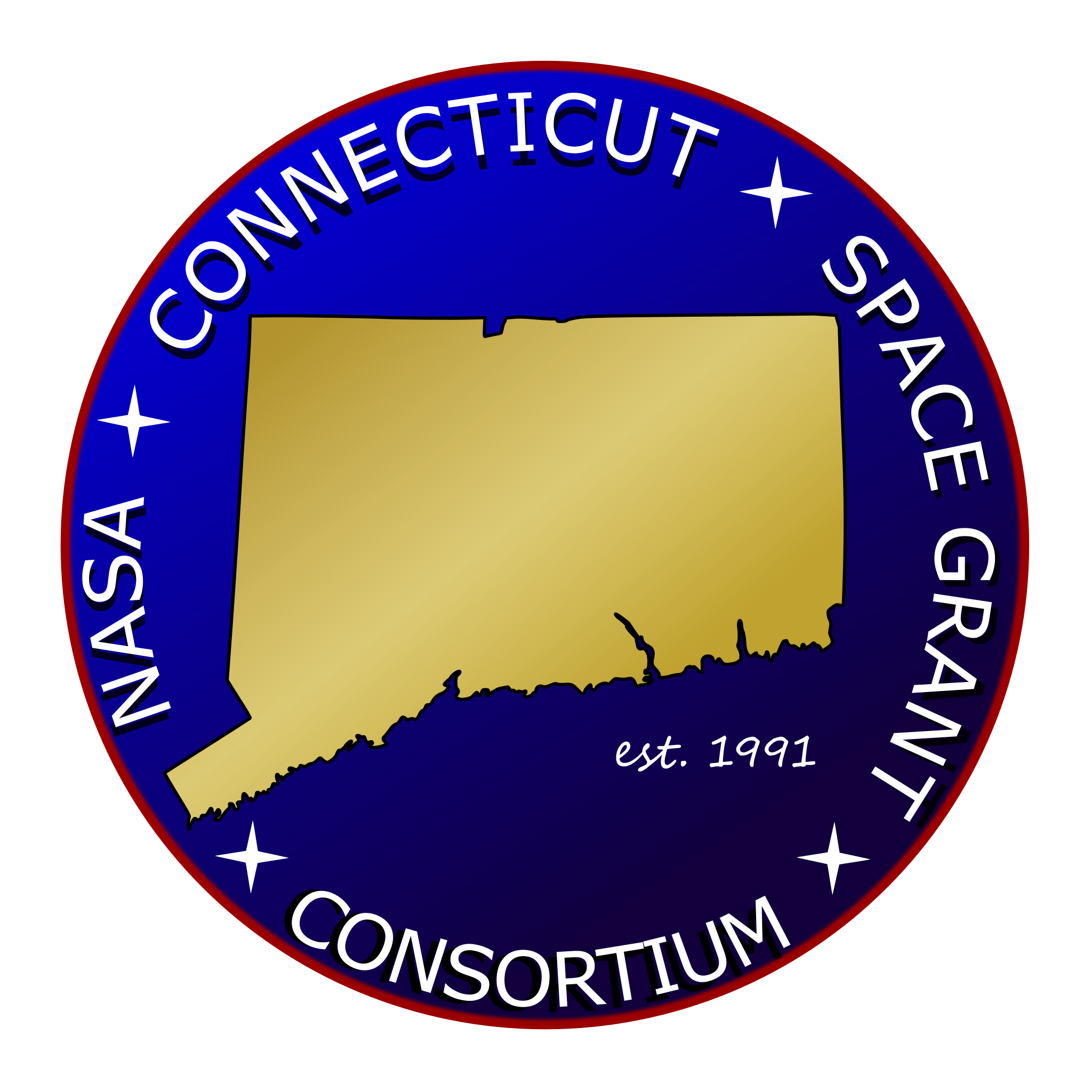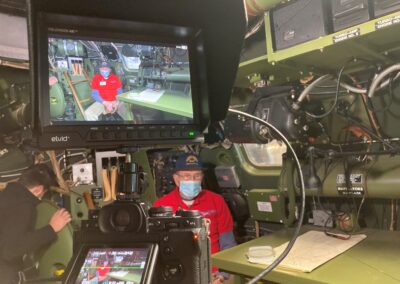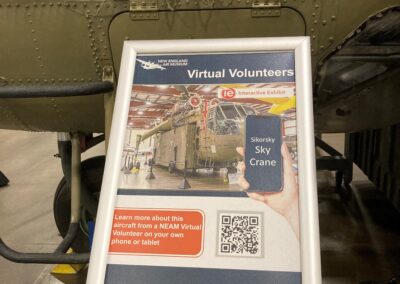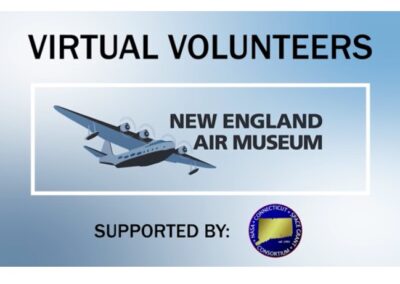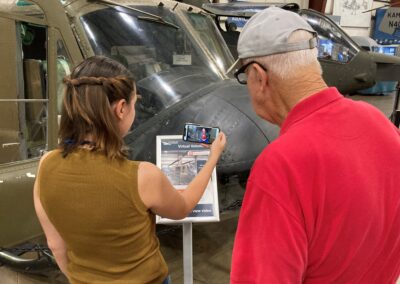The New England Air Museum (NEAM) is the largest aerospace museum in our region. Home to over one hundred historic aircraft, a renowned aircraft restoration facility, and a robust collection of aircraft components, objects, and exhibits, the museum’s mission is to preserve and interpret New England’s aviation history while inspiring the next generation of aerospace enthusiasts. This mission is supported by a small staff as well as over 150 dedicated volunteers, many of whom are retired pilots, aerospace engineers, or aviation industry professionals who have been with the museum for decades. A highlight for many museum visitors is the opportunity to connect with these volunteers, whether through an open cockpit experience, a guided tour, or one-on-one conversations. During the height of the COVID-19 pandemic, many of the museum’s volunteers were unable to participate in onsite activities due to health concerns. This challenge led the museum to create Virtual Volunteers, a series of videos featuring NEAM volunteers and their connections to the museum’s collection. These videos are accessible to visitors via QR codes and feature historical overviews of each aircraft as well as personal stories from volunteers who in many cases flew, repaired, built, or maintained that aircraft. This project was generously funded by a grant from the Connecticut Space Grant Consortium.
A recent interview with NEAM Director of Education, Amanda Goodheart Parks, Ph.D. describes the idea for and execution of their new Virtual Volunteers program.
How has the pandemic impacted the New England Air Museum specifically and the people who work there?
To quote Benjamin Franklin, “out of adversity comes opportunity.” While the pandemic certainly has brought its share of adversity to the museum, COVID-19 is not the first seemingly catastrophic event we have faced in our institutional history. On October 3, 1979, an F-4 tornado struck what was then known as the Bradley Air Museum, leveling our World War II era hangar and damaging or destroying most of our aircraft. Many organizations would have folded in the wake of such a disaster. We didn’t. Thanks to the dedication of our volunteers, staff, and supporters, we rose up from the ashes and rebuilt, becoming a bigger and better museum than before. Overcoming adversity and creating opportunity is woven into the fabric of NEAM’s history, and so it seems fitting that despite the many challenges wrought by COVID-19, we still found ways to fulfill our mission while ensuring the safety of our visitors, volunteers, and staff. We did this in several ways. Back in March 2020, after we voluntarily closed our doors to help slow the spread of the virus, we immediately went to work developing NEAMathome, an online collection of educational activities, videos, and online exhibits. We were among the first museums in the region to reopen last spring, first as an outdoor only attraction and later as a fully “open air” museum when we opened our hangar doors for the summer to allow for unlimited natural ventilation. By the fall of 2020 we had pivoted all our scout and school programs to virtual platforms to meet the needs of those groups, and we also found ways to offer social distanced versions of our popular youth and family programs. Our annual Haunted Hangars, Visits with Santa, and Easter Egg Hunt events were held in COVID-19 compliant ways, and visitors appreciated the ability to spread out in our 90,000 square foot exhibit hangars throughout the fall and winter months. Operations continued successfully though the spring of 2021, and thanks to generous support from the state of Connecticut, we are currently offering all Connecticut children under the age of 18 plus one accompanying adult free admission as part of the Connecticut Summer at the Museum program. It’s been a long, challenging year and half, but we are proud of the work our staff and volunteers have done and continue to do to serve our visitors and fulfill our mission.
Can you talk about how the docents and their individual stories are important to a visitor experience?
One of the best things about visiting the New England Air Museum is having the opportunity to speak to one of our volunteers who in many cases either designed, built, flew, or maintained the aircraft in our collection. Engaging with these remarkable men and women on a personal level, hearing their stories and learning about the history of aviation from them is truly invaluable, and many visitors say these conversations are their favorite part of visiting NEAM.
What were some ideas considered by the Museum to work towards a solution for both the temporary problem of COVID-19, but also the long-lasting problem of being able to preserve the people and their stories even after they are gone from the Museum? How did your final plan come about?
The Virtual Volunteers project dates to the early days of the pandemic. While scrambling to develop content for our new online initiatives, I discovered a document I created when I first came to the museum in 2015 that included a list of ideas for new projects and programs. Among these ideas was an oral history project to document the knowledge of the museum’s volunteer corps as well as their personal connections to the museum and its collection. Most of our volunteers are retirees in their 70’s and 80’s, and some of our oldest volunteers are nearly 100 years old. While there had been some attempts over the years to conduct interviews of these volunteers, those efforts were not accessible to the public. It occurred to me that with recent advances in technology, we could not only preserve our volunteers’ stories but also make them available for the public. After consulting with my colleagues, we decided to move forward with Virtual Volunteers in the spring of 2021.
Behind the Scenes Filming Shot
A behind-the-scenes shot of Virtual Volunteers filming that took place inside the museum’s fully restored Boeing B-29A Superfortress.
Virtual Volunteers Video Title Shot
Virtual Volunteers videos begin with a special thanks to the project’s sponsor, the Connecticut Space Grant Consortium.
As soon as you determined your plan, how did you present this idea to your volunteers about how you wanted to capture them in their time and tell their stories for future generations? What did you have the volunteers specifically highlight on during their particular videos?
Thanks to support from the Connecticut Space Grant Consortium, we were able to pilot the Virtual Volunteers project with six volunteers and six objects from our collection. We chose these objects because of their significance in Connecticut’s aerospace history, and the volunteers were selected because of their knowledge of and personal experience with those objects. One gentleman was a Huey helicopter Crew Chief during the Vietnam War. Another was an engineer at Pratt & Whitney for over thirty years, while another was part of the aerospace engineering team that helped bring the Apollo 13 astronauts home safely. All six volunteers were thrilled to participate in the project, and while some of them were a little shy at first given their lack of experience in front of a camera, once we started rolling, their passion for aviation and their love of sharing their knowledge came shining through. Each Virtual Volunteers video includes a historical overview of the aircraft or object so visitors can understand its role in aerospace history before shifting to the volunteer’s personal connections to the object. In some cases, the volunteers provided personal photos of their military service, and all of the videos end with the volunteers sharing their favorite part of volunteering at the museum.
After all the videos were done, what was the next step? What sort of technology or equipment was needed at the museum to facilitate the QR codes?
Thanks to the technological wonder that is the smartphone, the only thing visitors need to access the Virtual Volunteers videos is a QR code reader. Most smartphones have this ability in their cameras, while some may need to download a free QR code reader app. We offer free wi-fi to visitors, so a simple scan of the QR code on a Virtual Volunteers sign will bring up the video. It’s that easy!
How did you present this new experience to visitors?
We have special Virtual Volunteers signs at six locations around the museum, and the project has been included in our Soar into Summer programming series marketing via e-blasts, social media, and other advertising. It has been very well received by visitors as well as volunteers, and we hope to expand the project to include more aircraft/objects and volunteers in the future.
How has the museum and the visitors experience changed now that they have the knowledge and the experiences of the volunteers back in the museum?
While we were fortunate to have some dedicated volunteers onsite at the museum from the earliest days of our reopening, now that our full volunteer corps has returned to onsite activities, the museum truly feels alive again. From our restoration team to the library and archives staff to the docents, our volunteers are truly the heart and soul of this organization, and to have them all back onsite interacting with our visitors in-person has been a joy to see. That said, the Virtual Volunteers project has been a wonderful opportunity for us to engage with our audiences in new ways and to better utilize technology to improve the visitor experience. Now everyone can hear the stories of our volunteers anytime we are open, not just when volunteers are onsite. Having both in-person and virtual opportunities to engage with our volunteers is truly the best of both worlds, and we’re thrilled to have those opportunities available to visitors now thanks to the Connecticut Space Grant Consortium.
You can learn more about the New England Air Museum – especially to plan your trip to visit them and see the Virtual Volunteers program firsthand – on their website.
